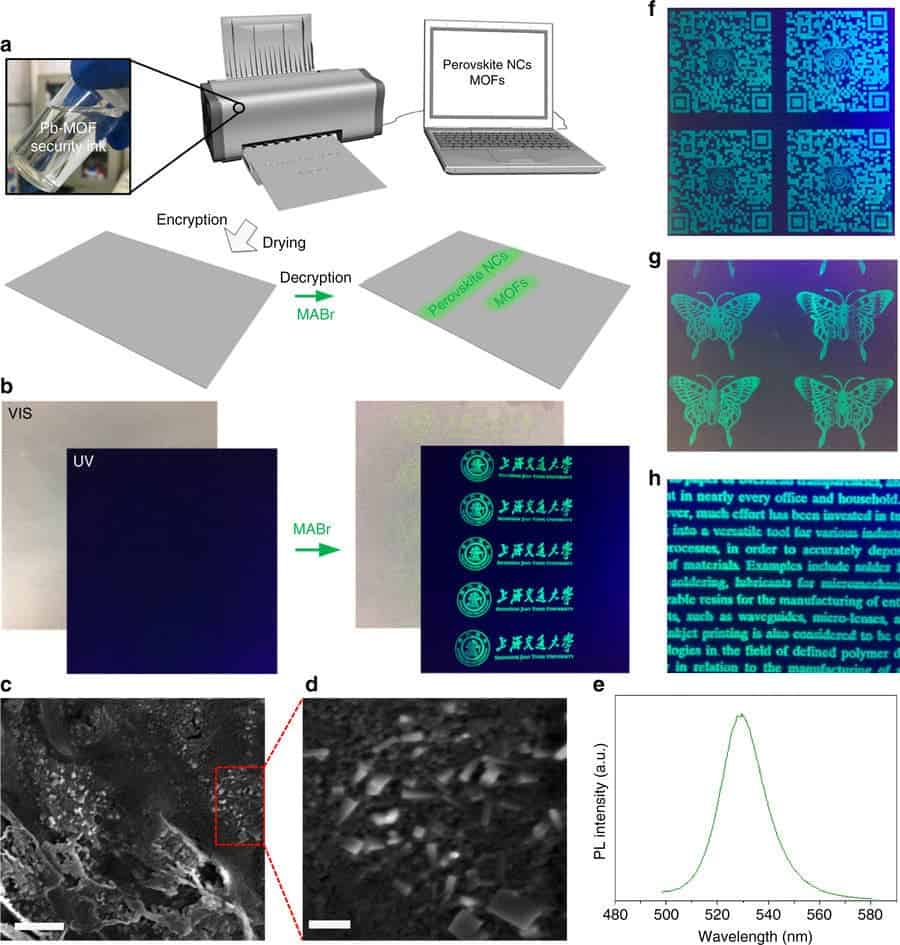Every kid used to play spy by writing ‘secret’ messages with lemon juice. As odd it may sound, invisible ink is actually highly sought after even to this day, especially for securing information or preventing counterfeiting. Chinese researchers recently reported a new take on invisible ink, and their work is no party trick.
Liang Li and colleagues at Shanghai Jiao Tong University were initially looking to synthesize chemical compounds that glow at the nanoscale. They accidentally made a lead compound that was invisible to the human eye instead.
When halide salt is added to lead-based metal-organic frameworks (MOFs), the material is converted into luminescent perovskite nanocrystals (NCs) and the text becomes visible again.
Other invisible inks can easily be detected. Sometimes, a person just needs to hold the piece of paper etched with the hidden message over a lightbulb to read its contents. The MOFs-based ink, however, is undetectable unless you sprinkle salt over it. What’s more, the ink can be printed with just about any printer, with some small modifications, making it relatively easy to create and distribute secured letters.
The MOFs-based ink could also prove useful in anti-counterfeiting measures. Many currencies already employ variations of invisible ink to hide text or pictures from the naked eye.
NCs-MOFs patterns can be printed on transparent PET foils as well, with promising applications on multi-integrated light sources or other optoelectronic devices.
There are also some downsides. Lead can be highly toxic to organisms if exposure time is long enough. If you’re that kind of spy, maybe you really want the recipient to get harmed by the letter. The team is working on tin-based alternatives, in any event.
Scientific reference: Conversion of invisible metal-organic frameworks to luminescent perovskite nanocrystals for confidential information encryption and decryption, Nature Communications, DOI: 10.1038/s41467-017-01248-2.










